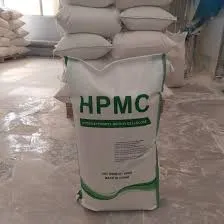
Aug . 14, 2024 19:51 Back to list
Innovative Approaches to the Synthesis of HPMC and Its Applications in Various Industries
HPMC Synthesis An Overview
Hydroxypropyl methylcellulose (HPMC) is a versatile and widely used cellulose ether that has found applications in various industries, including pharmaceuticals, food, construction, and personal care. Its unique properties, such as film-forming capability, viscosity enhancement, and emulsification, make it an essential ingredient in many formulations. HPMC synthesis involves several steps, integrating chemistry and technology to produce this vital polymer.
The synthesis of HPMC typically begins with cellulose, which is derived from natural sources such as wood pulp or cotton. Cellulose is a linear polymer of glucose, and its molecular structure consists of repeating cellobiose units. To transform cellulose into HPMC, it must undergo a series of chemical modifications. The first step is the alkylation of cellulose, which involves introducing hydroxypropyl and methyl groups onto the cellulose backbone.
HPMC Synthesis An Overview
The degree of substitution (DS) is a critical parameter in HPMC synthesis. It refers to the average number of hydroxyl groups on the cellulose molecule that are replaced by hydroxypropyl and methyl groups. A higher DS generally leads to increased solubility in water and enhanced viscosity in solution, making the polymer more effective for various applications. Manufacturers often tailor the DS to suit specific requirements, allowing for a range of HPMC products with differing properties.
hpmc synthesis

Once synthesized, HPMC can be purified and then dried to obtain a powdered form. The drying process is crucial as it influences the flowability and storage stability of the final product. The powder can be further processed to meet specific particle size distributions or to modify its viscosity profile. The resulting HPMC can then be utilized in various formulations, providing functional benefits such as improved texture, binding, and stabilization.
In the pharmaceutical industry, HPMC is frequently employed as a controlled-release agent and binder in tablet formulations. Its ability to form gels and films helps in controlling drug release rates, enhancing bioavailability, and masking unpleasant tastes in oral dosage forms. In food applications, HPMC serves as a thickener, emulsifier, and stabilizer for sauces, dressings, and baked goods. Its use in gluten-free products has also gained popularity, as it mimic some of the functional properties of gluten.
In construction, HPMC is often added to mortars and plasters to improve workability and adhesion. Its water-retaining properties enhance the performance of these materials, ensuring that they maintain sufficient moisture during the curing process. Additionally, in personal care products, HPMC can be found in lotions and creams, contributing to texture and consistency.
In conclusion, the synthesis of hydroxypropyl methylcellulose is a complex yet fascinating process that reaffirms the importance of cellulose derivatives in various fields. By tailoring the synthesis process and the degree of substitution, chemists can create customized HPMC products to meet the diverse needs of industries worldwide. As research continues, HPMC’s utility is likely to expand, bringing innovative solutions to both consumers and manufacturers alike.
-
Versatile Hpmc Uses in Different Industries
NewsJun.19,2025
-
Redispersible Powder's Role in Enhancing Durability of Construction Products
NewsJun.19,2025
-
Hydroxyethyl Cellulose Applications Driving Green Industrial Processes
NewsJun.19,2025
-
Exploring Different Redispersible Polymer Powder
NewsJun.19,2025
-
Choosing the Right Mortar Bonding Agent
NewsJun.19,2025
-
Applications and Significance of China Hpmc in Modern Industries
NewsJun.19,2025







